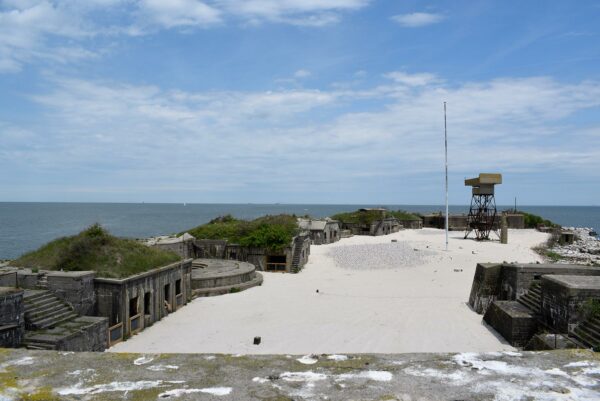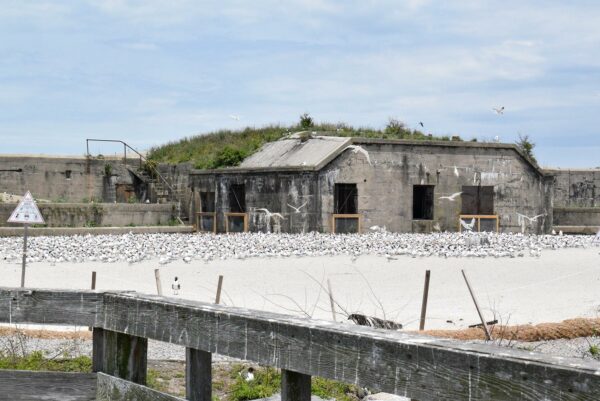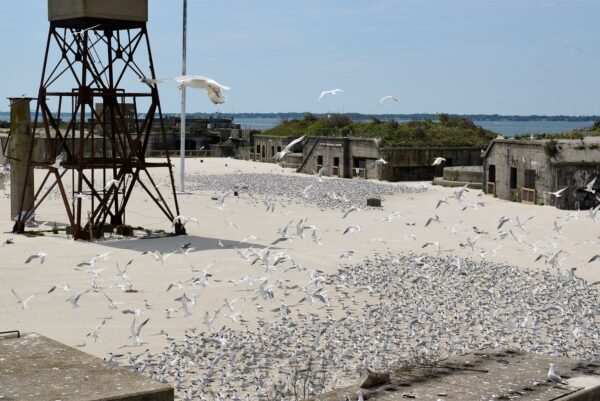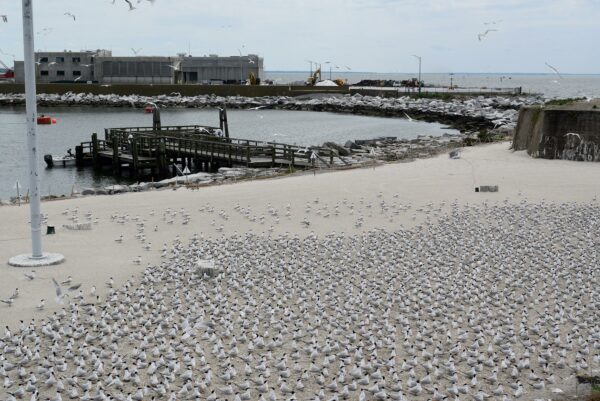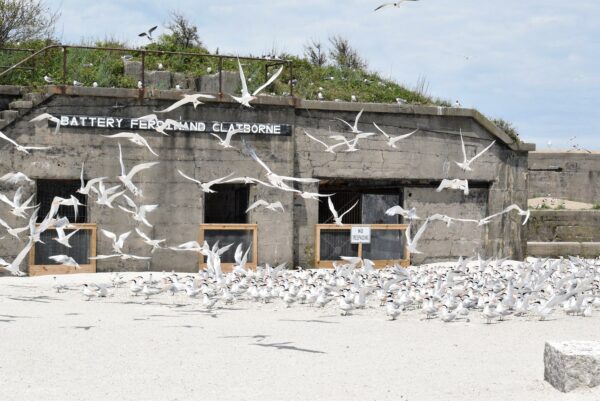Rip Raps Island, also known as Fort Wool, is a small island at the mouth of the James River, adjacent to South Island. It was constructed following the War of 1812 to protect Hampton Roads from the British. Its location also denied access to the James River during the Civil War, which became a vital advantage for the Union. During World Wars I and II, the Fort was an integral part of coastal defenses.
The island’s parade ground has been converted to suitable nesting habitat for the seabird colony.
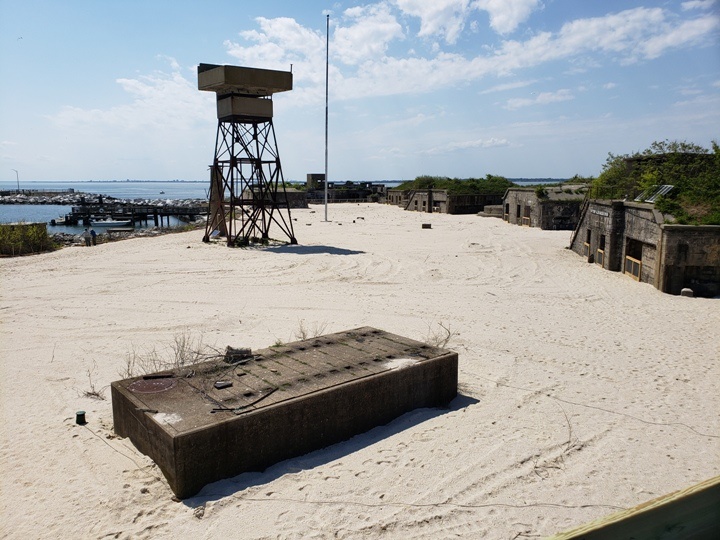
The Department of Wildlife Resources (DWR) worked closely with the Virginia Department of Historic Resources to ensure that the modifications don’t have impacts on the historic structures. The tasks completed include:
- Herbiciding the grass, using appropriate chemicals, to prevent grass from growing up through the new sand and gravel nesting substrate (completed March 1, 2020)
- Removing mammalian predators on the island that eat seabird eggs and chicks (work initiated March 17, 2020, and will be ongoing through the project)
- Decommissioning the American flag that previously flew 24-hours a day, since the lights must be turned off (DWR Honor Guard performed this ceremony on March 26, 2020)
- Installing erosion and sediment control structures around the south edge of the island
- Removing trees and shrubs from the parade ground (many of which are impacting the historic structures)
- Relocating and safely storing granite blocks and markers from the parade ground
- Installing a steel protective cover for the grave marker of “Lady”, a dog owned by the personnel serving at Fort Wool during World War II, who gave birth on the date of Pearl Harbor
- Installing barriers at building openings, gun pits, and other locations to prevent seabird chicks from entering spaces where they cannot be followed by adults
- Barging in sand and gravel and placing it across the open ground
- Placing Common Tern, Royal Tern, Gull-billed Tern and Black Skimmer decoys and undertaking social attraction, including audio systems that continuously broadcast the calls of Common Terns, Royal Terns, and Black Skimmers. Colonial seabirds want to nest with others, so these are proven techniques to attract birds to a particular location. Social attraction will continue until late June or early July. Installing camera systems for monitoring
- Placing signage notifying the public of the importance of not disturbing the birds on the island
- Photo: Jack Mayer, Office of the Governor
- Photo: Jack Mayer, Office of the Governor
- Photo: Jack Mayer, Office of the Governor
- Photo: Paige Pearson, DWR
- Photo: Paige Pearson, DWR
- Photo: Paige Pearson, DWR
- Photo: Paige Pearson, DWR
- Photo: Paige Pearson, DWR




